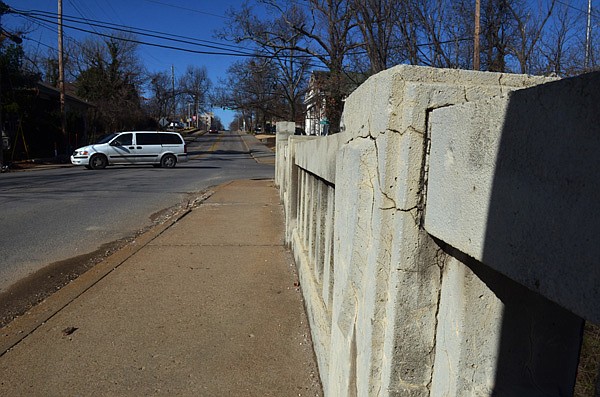City to Rework Bridge Contract
Advocate Wants 'Preservation' Efforts to be Clear
Wednesday, February 20, 2013
FAYETTEVILLE — City Council members will wait at least two weeks before deciding whether to award a design contract for historic bridge work to McClelland Consulting Engineers.
The council on Tuesday unanimously voted to table contract consideration after hearing concerns from Paula Marinoni, a longtime historic preservation advocate.
Marinoni questioned why the word “preservation” didn’t appear more prominently in a 31-page contract with the engineering firm.
At A Glance
Bridge Work
Overall bridge work is expected to cost $1.4 million. Up to $1 million will be paid for through the federal Highway Bridge Replacement and Rehabilitation Program. Remaining costs will be covered through the city’s Transportation Improvement Bond Program that voters approved in 2006.
Source: City Of Fayetteville
“We’re not saying what we need,” Marinoni said. “And it needs to be fixed.”
The added time will give city officials a chance to reword the contract in consultation with the Arkansas Highway and Transportation Department and the state’s Historic Preservation Program.
For years, Marinoni has urged city officials to return bridges on Lafayette and Maple streets as closely as possible to their original state.
The bridges, which run over the Arkansas & Missouri Railroad tracks between Arkansas and West avenues, were built in the 1930s by the New Deal-era Works Progress Administration. They are the only two pieces of city-owned property listed on the National Register of Historic Places.
Marinoni said she remembers running her hand across glass-encased lights on the Lafayette Street bridge when walking to her grandparents’ house as a child.
“You wouldn’t think it would be that big of a deal,” she said Tuesday, “but it was. It was a dramatic element of the whole.”
The lights have long since been removed. Guardrails on the bridge are orange with rust and show damage from a car wreck in 2004.
“This is part of our history,” Marinoni said. “It’s important when you have something like that it can go from one generation to the next. People can see it and say, ‘Oh, this is the way Fayetteville used to look.’”
Chris Brown, city engineer, said the goal of restoring the bridges as closely as possible to their original condition was clearly communicated with McClelland’s engineers. Some material, such as the guardrails, cannot be precisely replicated, because of modern structural requirements for bridges, Brown said.
He emphasized 1930s architectural renderings will help design consultants identify what needs to be done. He said the project will require oversight from the state highway department and historic preservation program.
“We feel confident they have the capability to handle this,” Brown said.
Daniel Barnes, president of McClelland’s Fayetteville office, said his company and sub-consultant Horner & Shifrin engineers of St. Louis have experience repairing historic bridges, including a 1931 bridge that runs over Lake Taneycomo in Branson, Mo.
“Not only are we concerned about the historical significance,” Barnes said. “As engineers, we’re concerned about the health, welfare and safety of the general public.”
The city’s $279,000 contract with McClelland calls for new retaining wall, guardrail and light fixture designs.
Brown said repairs may be needed to the bridge surface, but, he added, bridge footings and piers appear to be structurally sound.
Construction is expected to begin in early 2014.
Mayor Lioneld Jordan said of Tuesday’s delay, “I’ve been working on this for three-and-a-half years. I don’t think another two weeks is going to make a whole lot of difference.”

